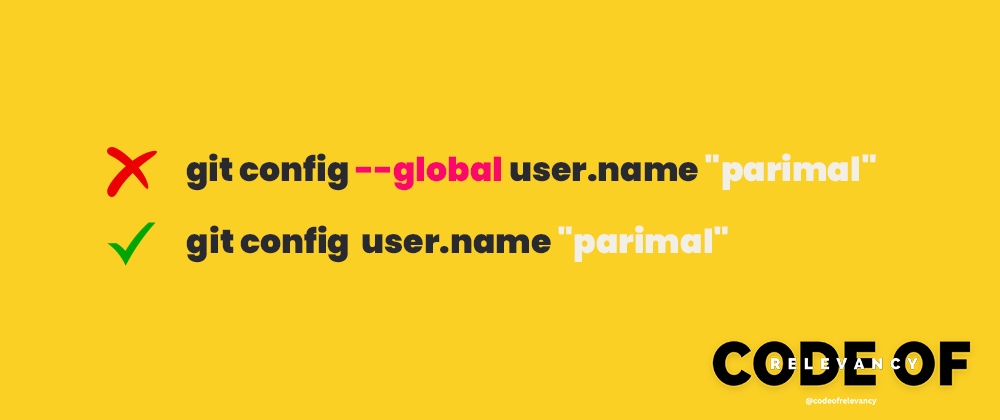I am sharing my personal experience through this article.
When working with Git, it's important to properly configure your user name and email to accurately reflect who made a particular change in the version control history. You can change this by setting Git configurations globally (using git config --global) or at the repository level (using git config without --global). While global configurations can be convenient, they can also lead to serious issues when working on a project with multiple developers or using a shared machine.
Use of git config command
Git config is a command in Git that allows you to configure various settings for a Git repository or globally on your machine. With the git config command, you can set options such as the user name and email, default text editor, default merge tool, and other settings.
There are 3 levels of git config; local, global and system
local: [Highly Recommended] Local configs are only available for the current project and stored in .git/config in the project's directory.
Create a project specific config, you have to execute this under the project's directory.
git config user.name "Parimal"
git config user.email "parimal@codeofrelevancy.com"
global: Global configs are available for all projects for the current user and stored in ~/.gitconfig.
Create a global config
git config --global user.name "Parimal"
git config --global user.email "parimal@codeofrelevancy.com"
system: System configs are available for all the users/projects and stored in /etc/gitconfig.
Create a system config
git config --system user.name "Parimal"
git config --system user.email "parimal@codeofrelevancy.com"
The Hidden Risks of Global Git Configurations and Loss of Business
Setting Git configurations globally can cause problems if you push to another client's repository using the wrong name by mistake. The global configuration settings are stored in your computer's global Git configuration file, which is usually located in the ~/.gitconfig file.
When you make changes to the global configuration file, these changes are applied to all Git repositories on your machine. If you push to a repository using the wrong name, the name will be recorded in the repository's history, and it can cause confusion and lead to errors in the future.
To avoid this issue, it is recommended to set the user name and email at the repository level using git config, without the --global option, so that the correct information is associated only with that particular repository.
When multiple developers use the same machine and the Git configuration is set globally, it can cause issues when they switch between their own repositories. This is because the user name and email that are set globally will be applied to all repositories on the machine, regardless of which user is making changes. This can result in commits being attributed to the wrong person.
That is a potential risk of using global Git configurations. Pushing commits with incorrect author information can lead to confusion and a loss of trust, loss of clients, especially in a private company or client-based setting.
In such scenarios, it's essential to maintain the integrity and accuracy of the version control history to ensure that everyone involved has a clear understanding of who made what changes. By using repository-level Git configurations, you can avoid pushing incorrect information and ensure that each repository has the correct information associated with it. This helps to maintain trust and transparency in the project and reduces the risk of losing clients or creating confusion among team members.
It may also be a good idea to have a clear Git policy in place for your team or company to help prevent these types of mistakes from happening.
🍀Conclusion
It is recommended to always set your Git configurations at the repository level, rather than globally. This ensures that your personal information is associated only with your own repository and the version control history accurately reflects who made what changes. Avoiding global Git configurations helps preserve the integrity of the version control system and avoids confusion and mistakes in the history of your project.
🍀Support
Please consider following and supporting us by subscribing to our channel. Your support is greatly appreciated and will help us continue creating content for you to enjoy. Thank you in advance for your support!



















